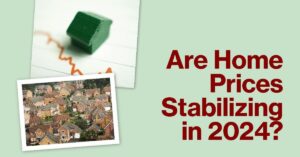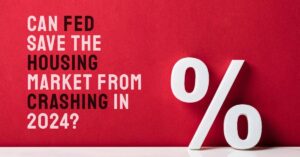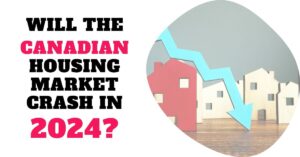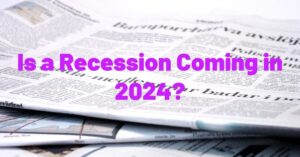Are home prices finally stabilizing in 2024? This question is on the minds of many prospective homebuyers and current homeowners alike as they navigate a changing housing market. Recent reports suggest that there are signs of stabilization in home prices, especially after a tumultuous couple of years marked by high demand and soaring prices.
Are Home Prices Finally Stabilizing in 2024?
Key Takeaways:
- Stabilization Signs: 2024 shows signs of stabilization in home prices.
- Interest Rates Impact: Rising interest rates have cooled down the previously heated market.
- Location Matters: Stabilization varies significantly by region.
- Market Predictions: Experts indicate that while some areas may see a dip in prices, overall normalization is expected throughout 2024.
Over the past few years, the real estate market has experienced a whirlwind of activity. Home prices skyrocketed during the pandemic due to low-interest rates and a rush for suburban living. However, by the end of 2023, many analysts began noticing a shift. In 2024, the conversation has turned to whether home prices are finally stabilizing.
Recent housing data shows that, while interest rates remain relatively high, there is a cooling in the market. Home sales have slowed down, which is typical when interest rates rise. Many potential buyers are being priced out, thus reducing demand and leading to a stabilization.
Factors Influencing Stabilization
Interest Rates and Their Impact
One of the most critical factors contributing to the stabilization of home prices in 2024 is the rising interest rates. The U.S. Federal Reserve has been adjusting rates to combat inflation, which has made mortgages more expensive. Higher borrowing costs can deter buyers, leading to a more balanced market between supply and demand.
This sharp rise in interest rates has changed the buying patterns of many. Buyers are now more cautious, resulting in an overall slowdown in the housing market from the frenetic pace observed in previous years. Consequently, this cautious approach may enable home values to stabilize after their rapid rise.
Regional Differences in Home Prices
It's essential to recognize that stabilization does not apply uniformly across the nation. Different regions experience varying rates and patterns of home price changes. For instance, in metropolitan areas that once saw explosive growth, such as parts of California and New York, prices are beginning to cool. Cities like Palm Beach have seen a significant decrease in home prices, while other areas still experience slight increases.
This differentiation is crucial for prospective buyers who must consider local market conditions. For example, while some areas might see stabilization or even decreases in prices, others might continue to experience growth. Therefore, buyers should remain informed about their specific local market conditions.
Consumer Sentiment and Its Role
Consumer sentiment also plays a crucial role in the stabilization of home prices. According to data gleaned from surveys, many potential buyers are still hesitant to enter the market, primarily due to uncertainty about future rate hikes and the economic climate. This hesitation contributes to lower demand, which subsequently impacts pricing.
In an age where social media and financial news outlets significantly influence public opinion, the prevailing sentiment can either fuel a rush to buy or create a wait-and-see approach. Consumer confidence can stabilize prices, as people are more likely to invest in property when they feel economically secure.
Looking Ahead: Market Predictions for the Rest of 2024
As we move further into 2024, predictions about home prices continue to emerge. Experts emphasize that while stabilization is occurring, it may not mean a drastic drop in prices. Instead, we might see a plateau where prices remain stable for a period. Housing prices might decrease slightly based on where interest rates are positioned, but overall, prices are anticipated to stabilize throughout the year as economic conditions evolve.
The stabilization of the housing market is a multi-faceted issue influenced heavily by interest rates, local market conditions, and consumer sentiment. Expectations from industry experts suggest we could witness a gradual normalization of the market as both buyers and sellers become more comfortable with current economic trends.
A Closer Look at the Economic Landscape
Examining the broader economic conditions is essential to understanding the housing market's state. Inflation has been a significant concern, impacting everything from the costs of goods to interest rates. The economic factors leading to the Fed's rate adjustments have also kept many potential buyers on the sidelines. As noted in various reports, it’s clear that macroeconomic trends will continue to play a pivotal role in shaping housing prices.
The balance between economic growth and inflation will significantly affect how fluidly the housing market responds in the coming months. Buyers and sellers alike must remain vigilant, constantly adapting to changing economic indicators.
What Does This Mean for Homebuyers?
For hopeful buyers, a stable housing market could be a welcome change. While some price softening is possible, it's unlikely to be a dramatic drop. Affordability will still be a challenge due to higher interest rates, but competition may ease, creating more opportunities for serious buyers who were priced out in the previous market frenzy.
The future trajectory of the housing market depends heavily on external economic factors like inflation and the Federal Reserve's interest rate policy. If rates continue to climb, it could further cool price growth. However, a strong job market and ongoing underlying housing demand could still prevent prices from plummeting. The key will be how these forces play out in a delicate balancing act.
Thus, the 2024 housing market is likely to be one of moderation, not dramatic swings. While home prices may not plummet, significant growth is also unlikely. This could be a good time for buyers who were priced out in previous years, as long as they can qualify for mortgages at current interest rates. Careful budgeting and a strong understanding of affordability will be crucial for navigating this new market landscape.
Should this hold you back from investing today? Absolutely not. We are at or near the bottom of the (national) real estate market and there are many opportunities available today. Prospective homebuyers and Investors should prioritize staying up-to-date on local market trends. This is especially important because national forecasts may not reflect the nuances of specific regions or neighborhoods.
Conclusion: The Future of Home Prices
The question of whether home prices are finally stabilizing in 2024 is being answered with cautious optimism. While several factors contribute to this stabilization, including rising interest rates and varied regional performance, markets remain nuanced and complex. The approach of both consumers and industry professionals will determine how the remainder of the year unfolds.
As anticipated, home prices might not drop drastically but rather plateau, suggesting a more balanced and realistic market for both buyers and sellers. Understanding these trends will empower buyers and investors to make informed decisions as they navigate the intricate real estate maze.










